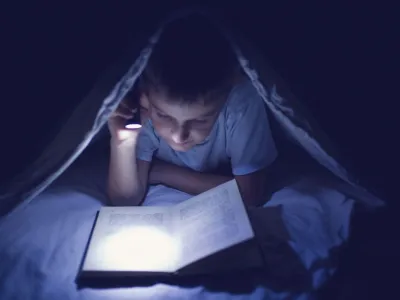Tips and safety during power outages
July 12, 2022

Published July 12, 2022
Summer and winter can both bring unpredictable weather, and Minnesota has its fair share of sudden thunderstorms, snowstorms, and high winds that can damage electrical lines. Power outages can be stressful, uncomfortable, and even dangerous. Here are some tips to prepare for and safely navigate power outages.
- If you or someone in your household requires medical equipment/refrigerated medicine, contact your utility ahead of time and let them know. Utilities may be able to prioritize restoring power to your home.
- Have a backup plan and a location you can go to if needed, especially if someone in your home is particularly vulnerable. This might include elderly or very young family members who are sensitive to heat and cold or a family member who depends on electric-powered medical equipment.
- If your home has a well, fill up water ahead of forecast storms, so you have drinking water and can flush toilets. Well pumps do not operate when the power is out.
- Store plenty of water, and keep hydrated when the air conditioning is off. The Department of Energy recommends one gallon a day per person.
- Have flashlights and batteries handy.
- If you have a portable phone charger or power bank, keep it charged and ready.
- Keep the emergency number for your electric utility handy in case you need to call.
- Keep the fridge and freezer full. A full fridge and freezer will keep longer than a half filled one. If you don’t want to fill it with excess food, store gallon jugs of water in the freezer. They can be used for multiple purposes during a power outage.
- Keep a household first aid kit stocked in case something happens.
- Keep your vehicle gas tank at least half full (or your EV battery charged). Gas station pumps do not operate without electricity.
- Consider how you will heat your home without electricity during a winter outage. Even if your home is heated with natural gas or propane, the heat may not work if the power is out to the thermostat or the furnace fan. If you have a wood stove, stock up on wood. Do not use a propane heater inside your home unless it is specifically designed for indoor use; the carbon monoxide it releases can be deadly.
- Minimize opening the fridge or freezer door as much as possible. The CDC estimates that If the doors stay closed, food will stay safe for up to:
- four hours in a refrigerator
- 48 hours in a full freezer; 24 hours in a half-full freezer
- Keeps windows and window treatments closed to prevent warm air from coming in during the summer and warm air from escaping during the winter.
- Have surge protectors and unplug appliances and electronics to avoid damage from electrical surges.
- Drain your pipes if they are at risk of freezing. If it is below freezing outside and you cannot keep your home above 55 degrees, the pipes could freeze and burst. Shut off the main water valve in your home and open every faucet until the pipes are empty.